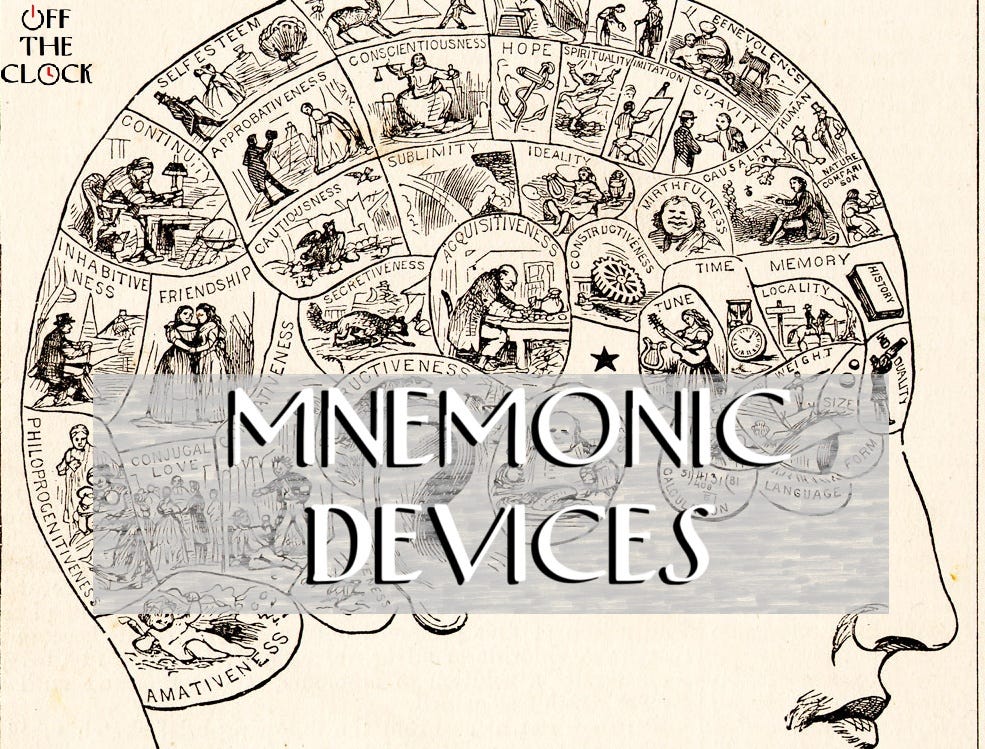Welcome to “Off the Clock,” a little something that lands somewhere between Timeless & Timely.
I send out this fun look at language and words every other Saturday as bonus content. If someone sent this to you, please consider subscribing.

“The true art of memory is the art of attention.”
— Samuel Johnson, 1759
For the curious mind, the intake of information and knowledge never ends.
The world, filled as it is with such richness of detail — our favorite books, family members’ birthdays, the Pantone Color of the Year,1 the date of the signing of the Declaration of Independence, the time of our weekly team meeting, the number or letter of the subway train we need to take downtown — it can be hard to recall what’s important to us at any given time.
The human brain is a remarkable organ, responsible for keeping our autonomic nervous system working (breathing, circulation, digestion) while allowing us to move, think, plan, and remember.
The foremost brain in literature belongs to Sherlock Holmes, yet it isn’t superhuman. When he and Watson begin their association, the good doctor is astounded at the profound ignorance that accompanied Holmes’s impressive knowledge.2
The detective had a practical approach to retaining information:
“You see,” he explained, “I consider that a man’s brain originally is like a little empty attic, and you have to stock it with such furniture as you choose. A fool takes in all the lumber of every sort that he comes across, so that the knowledge which might be useful to him gets crowded out, or at best is jumbled up with a lot of other things so that he has a difficulty in laying his hands upon it. Now the skillful workman is very careful indeed as to what he takes into his brain-attic. He will have nothing but the tools which may help him in doing his work, but of these he has a large assortment, and all in the most perfect order. It is a mistake to think that that little room has elastic walls and can distend to any extent. Depend upon it there comes a time when for every addition of knowledge you forget something that you knew before. It is of the highest importance, therefore, not to have useless facts elbowing out the useful ones.”
You Must Remember This
At certain points in life — intellectual development in school, practical use for conversations in polite company, or fact-loading for pub quiz night — we need to remember groups or lists of words.
To make this process easier, we can use a mnemonic device. That is, a tool to help boost your ability to remember, retain, or retrieve information quickly.
It’s a shortcut that creates an association between the information you’re trying to remember with a unique sentence, phrase, image, sound, or acronym.
The rest of this post is for our & Guild (paid) members. They’ll find out:
How a familiar audible mnemonic that’s a childhood crossover melody helps with learning (and the famous composer who gave it prominence)
The common way we remember series of numbers
Some of the easiest to remember acronyms
Obscure sentences (perhaps even a risqué one) for the most difficult groups of words to remember
Keep reading with a 7-day free trial
Subscribe to Timeless & Timely to keep reading this post and get 7 days of free access to the full post archives.




